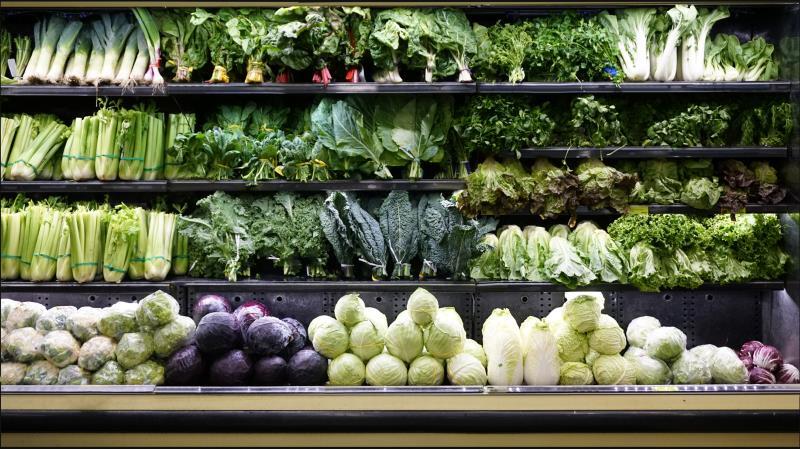When you think about what’s heating the planet, your mind might jump to tailpipes or smokestacks—but the appliances keeping our food cold and buildings comfortable are quietly playing a big role, too.
Refrigerants, the gases that power air conditioners, refrigerators, and freezers, are among the most potent greenhouse gases in use today. And in Georgia, where hot summers and year-round cooling needs are the norm, refrigerant management is a powerful—and often overlooked—climate solution.
>> Learn about the 20 Drawdown Georgia climate solutions for our state.
Why Refrigerants Matter for Georgia’s Climate Goals
Refrigerants are a double-edged sword. On one hand, they’re essential to modern life—keeping food fresh, vaccines viable, and homes livable. On the other hand, many of the most common refrigerants, especially hydrofluorocarbons (HFCs), have a global warming potential (GWP) thousands of times greater than carbon dioxide.

Every time a cooling system leaks, is poorly maintained, or reaches the end of its life without proper disposal, those gases escape into the atmosphere. Globally, the refrigeration sector contributes an estimated 7–10% of greenhouse gas emissions—and demand for cooling is only growing.
For Georgia, where extreme heat is becoming more frequent and population growth is driving up energy demand, refrigerant management is one of the 20 high-impact, market-ready climate solutions identified by Drawdown Georgia.
The Drawdown Georgia research team estimates that our state can reduce emissions by one megaton (Mt) of CO2e by retrofitting refrigeration systems in all Georgia grocery stores so that the refrigerant leakage rate is no higher than 8%. Reducing leaks and shifting to safer alternatives can make a measurable difference in our state’s emissions trajectory.
The Leaky Problem No One Talks About
It’s easy to assume refrigerant emissions are under control—but in reality, leaks are common and costly. Poor system design, aging infrastructure, and inconsistent maintenance practices mean that large volumes of HFCs escape during operation, servicing, or disposal. These leaks account for a significant portion of the sector’s emissions, often without anyone noticing.
In Georgia, that might include grocery store refrigerators, air-conditioned office buildings, transit cooling systems, and household HVAC units. The good news? These emissions aren’t inevitable. Preventing leaks is one of the most cost-effective steps we can take to draw down emissions.
What Solutions Look Like—And Who’s Leading the Way
Reducing refrigerant emissions doesn’t require reinventing the wheel—it just means tightening it up.
1. Leak Detection and Repair
Regular inspections, leak detection systems, and trained technicians can dramatically reduce emissions during a system’s lifespan.
2. Responsible End-of-Life Management
Properly recovering and recycling refrigerants from old appliances keeps them out of the atmosphere. Programs that support technician training and appliance take-back programs are key.
3. Switching to Safer Alternatives
Low-GWP refrigerants like carbon dioxide (CO₂), ammonia, and certain hydrocarbons are already in use globally. They offer effective cooling with far lower climate risks—when handled safely.
4. Industry Leadership in Action
One company that is helping to lead the way on reducing emissions from refrigerants is supermarket chain ALDI. The company has committed to new science-based targets that include reducing its absolute Scope 1 and 2 emissions (the emissions the company creates or leaks directly, and those that come from the energy it buys) by 90% and Scope 3 emissions (created by everything else tied to its operations, including suppliers and customers) by 28% by 2030, compared to 2020 levels.
These targets are approved by the Science Based Targets initiative and guide ALDI’s work to eliminate climate pollutants across its operations, including its refrigeration systems.
An important part of that strategy involves transitioning to natural refrigerants with significantly lower global warming potential than hydrofluorocarbons (HFCs). ALDI already operates over 700 stores in the U.S. using propane or CO₂-based refrigerants, and plans to eliminate all HFCs from new stores by the end of 2035.
Policy and Business Actions That Work
We don’t need to wait for futuristic breakthroughs—there’s plenty we can do today.
Refrigerant Solutions for Policymakers in Georgia:
-
Incentivize leak detection and maintenance: Offer grants or rebates for systems with built-in leak detection and recovery technologies.
-
Strengthen technician certification: Ensure refrigerant handlers are properly trained and accountable.
-
Support safe disposal programs: Partner with appliance retailers and waste management providers to recover refrigerants from discarded equipment.
Refrigerant Solutions for Georgia Businesses:
-
Conduct a refrigerant audit: Know what refrigerants you use and catch any active leaks.
-
Choose climate-smart equipment: Invest in systems that use low-GWP refrigerants instead of HFCs and offer high energy efficiency.
-
Join voluntary industry programs: Engage with climate pledges and initiatives like the Drawdown Georgia Business Compact or the Environmental Protection Agency’s GreenChill program - through which two Georgia ALDI grocery stores are already certified - that boost transparency and accountability.
Cooling That Protects Our Climate
Refrigeration is a cornerstone of modern life—and it can also be a cornerstone of climate solutions. By reducing leaks, shifting to safer alternatives, and supporting smart policies, Georgia’s businesses and policymakers can turn down the heat on refrigerant emissions.
Want More Stories Like This?
Subscribe now to be notified when new blog posts are published to get the latest insights on climate solutions that work for Georgia delivered straight to your inbox.









